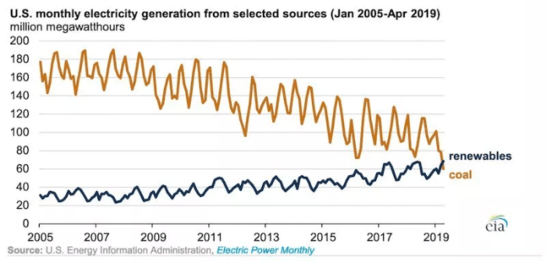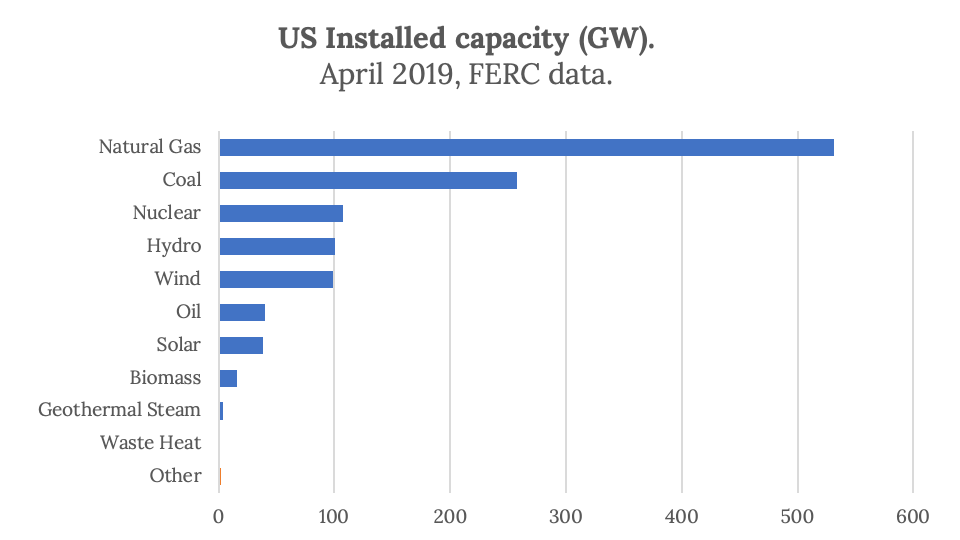
US electricity generation capacity from renewable energy sources surpassed coal for the first time this April, and that gap looks to grow substantially during the next three years, according to a recent analysis. The data reveals that the nation’s renewable energy capacity has been increasing by, on average, a percentage point each year.
In May, The Federal Energy Regulatory Commission released its April Energy Infrastructure Update, and the numbers reveal that the total installed capacity of renewables — including hydropower, wind, solar, geothermal, and biomass — hit 257.53 GW in April 2019, grabbing a 21.56% share of installed generating capacity, edging out coal with 257.48 GW and a 21.55% share. Natural gas is still the leader in total installed capacity for electricity generation in the US, with a 44.44% share as of April.

Meanwhile, wind and solar alone should push renewables far, far ahead of coal. FERC expects there to be a “high probability” of 40,203 MW of new wind and solar installed by May 2022 and combined with a decline in nuclear, coal, oil, and natural gas capacity, the gap between renewables and coal will be vast.
The updated capacity numbers fall in line with the expectations of electricity generation from renewables surpassing coal in the US. Another study recently noted that renewables are now the cheapest power option for most of the world, as costs continue to hit new lows.
